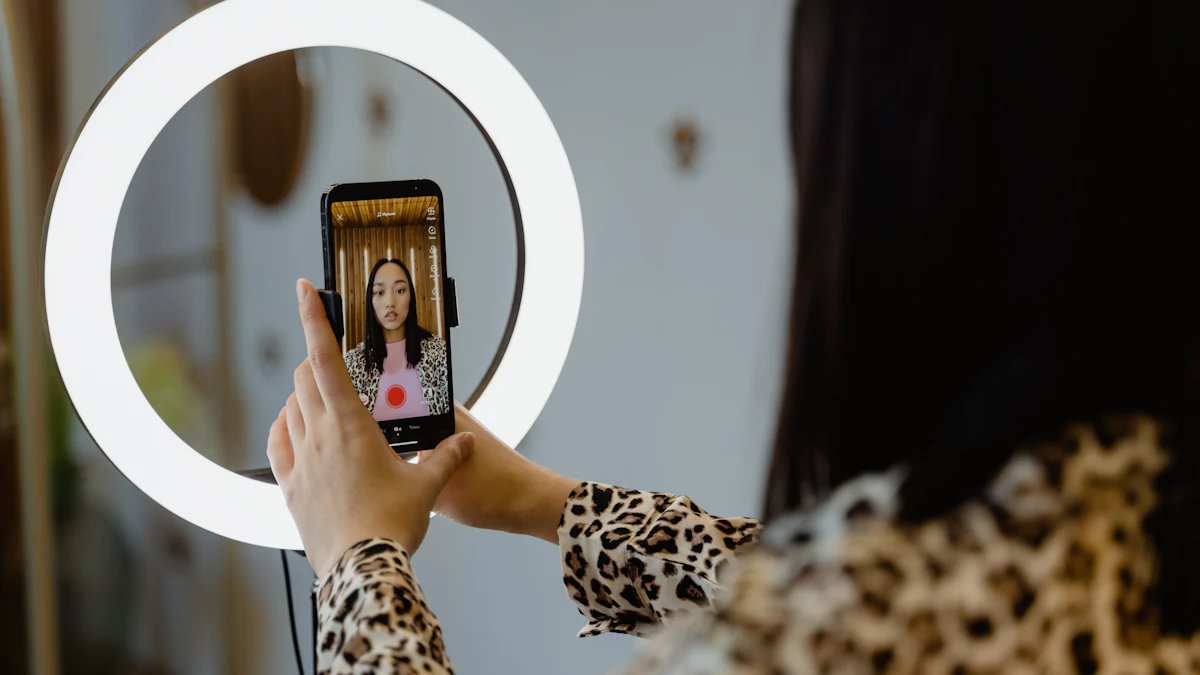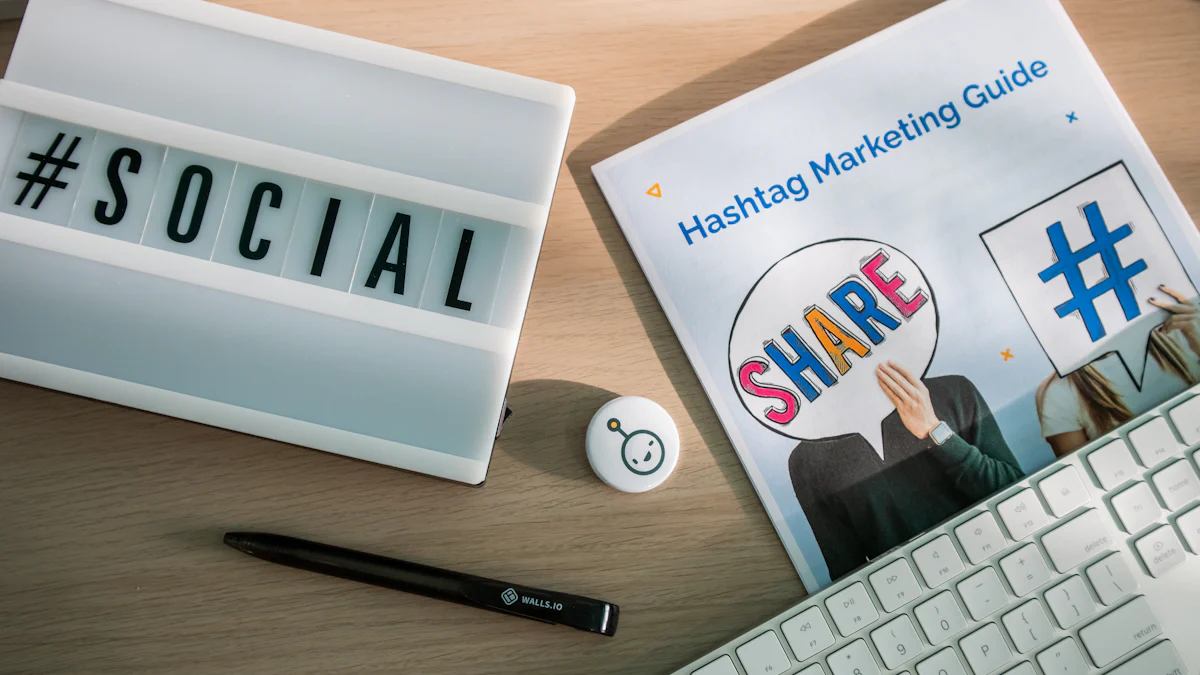The Psychology and Science Behind Viral Content Creation

Why do some posts explode with likes, comments, and shares while others barely get noticed? The secret lies in understanding what makes people tick. Viral content isn’t just luck—it’s a mix of psychology, science, and smart content creation. When you tap into emotions like joy, surprise, or even anger, you create something people can’t resist sharing.
Think about it. Viral content often combines emotional appeal with practical value. It might make someone laugh, teach them something new, or even spark a heated debate. Sharing such content doesn’t just spread the message—it also boosts the sharer’s social currency. People love to share things that make them look informed, funny, or relatable.
If you’ve ever wondered how to make your content go viral, it starts with understanding these triggers. By creating viral content that resonates emotionally and feels useful, you can craft posts that people can’t help but pass along.
Emotional Triggers in Viral Content

Why do some posts make you laugh, cry, or feel inspired enough to hit the share button? It all comes down to psychological triggers. Viral content thrives on stirring a strong emotional response, whether it’s joy, anger, or surprise. Let’s dive into how emotions play a role in making content highly viral.
Positive Emotions That Drive Sharing
Joy and Happiness as Key Drivers
Joy and happiness are like magnets for viral content. When something makes you smile or laugh, you naturally want to share that feeling with others. Content that sparks humor or positivity fosters connection and spreads good vibes. Think about funny memes or heartwarming videos—they’re irresistible. Studies show that emotional engagement with positive emotions like joy and humor significantly boosts sharing. People love spreading positivity, and it’s a key driver of virality.
Awe and Inspiration: Creating Memorable Moments
Awe is another powerful emotion that fuels sharing. It’s that jaw-dropping feeling you get when you see something extraordinary. Whether it’s a breathtaking photo of nature or an inspiring story of human resilience, awe triggers admiration and wonder. High-arousal emotions like awe make content memorable, encouraging you to share it with others.
Negative Emotions That Spark Engagement
Anger and Outrage: Fueling Discussions
Negative emotions can also drive engagement. Anger and outrage, for instance, often lead to heated discussions online. Social media platforms amplify these emotions by rewarding users with likes and shares for expressing outrage. This creates a cycle where people continue sharing content that stirs these feelings, making it go viral.
Fear and Anxiety: Content That Warns or Protects
Fear grabs attention like nothing else. Content that warns about dangers or highlights urgent issues taps into your survival instincts. Anxiety creates a sense of urgency, pushing you to share information quickly to protect others. This psychological trigger is why alarming news or safety tips often spread rapidly.
High Arousal Emotions and Virality
The Role of Excitement and Surprise
Excitement and surprise are the secret sauce for building excitement and engagement. Surprise keeps you hooked, while excitement makes you eager to share. Viral content often combines these emotions to keep you engaged and amazed.
Emotional Contagion: How Feelings Spread Online
Ever noticed how someone’s mood can rub off on you? That’s emotional contagion in action. On social media, emotions spread like wildfire. When you see a post that resonates emotionally, you’re likely to mimic and share those feelings. This ripple effect amplifies the reach of viral content.
Social Behaviors: Why People Share Online
Have you ever wondered why people share online? It’s not just about the content itself—it’s about what it says about them. Sharing is deeply tied to our social nature. It’s how we connect, express ourselves, and even boost our reputation. Let’s explore the psychology behind this behavior.
Social Currency and Personal Identity
Sharing Content That Reflects Who We Are
Sharing isn’t random. It’s a way to show the world who you are. When you share something funny, insightful, or inspiring, you’re saying, “This is me.” Content that gets shared often aligns with personal values or beliefs. It’s like a digital mirror reflecting your identity. People also share to seek validation or affirmation from their peers. Whether it’s a meme that matches your humor or a cause you care about, sharing helps you express yourself in a world that celebrates individuality.
The Appeal of Exclusivity and Novelty
Let’s face it—everyone loves being in the know. Sharing exclusive or novel content makes you feel special. It’s like being the first to tell your friends about a hidden gem. This taps into social currency, where your reputation grows because you’re seen as someone who discovers cool or unique things. Sharing something new or rare not only boosts your status but also keeps your audience engaged.
Relatability and Connection
Why Relatable Stories Go Viral
Relatability is the secret sauce of viral content. When you see a story that feels like it was written just for you, it’s hard not to share it. People love connecting over shared experiences. Whether it’s a funny parenting fail or a heartfelt moment, relatable content creates a bond. It’s this power of relatability that makes people say, “You’ve got to see this!” and hit the share button.
Empathy as a Tool for Engagement
Empathy is a game-changer. When content resonates emotionally, it grabs attention and keeps people engaged. You feel understood, and that connection makes you want to share. Empathy-driven content often sparks longer interactions, as people take time to reflect and respond. It’s not just about the story—it’s about how it makes you feel.
Storytelling: The Psychology of Viral Content
Crafting Narratives That Resonate
Storytelling is at the heart of viral content. A good story pulls you in, makes you feel something, and leaves a lasting impression. Whether it’s a tale of triumph or a funny anecdote, stories create emotional connections. They’re not just about facts—they’re about feelings. And when emotions run high, engagement follows.
The Power of a Clear and Memorable Message
A great story needs a clear message. Think of campaigns like “Thank You, Mom” by Procter & Gamble. It resonated because it celebrated real, heartfelt experiences. A memorable message sticks with you, making it more likely to be shared. Humor, surprise, or even a catchy tagline can make your content unforgettable.
Practical Value: The Utility of Viral Content
When it comes to creating viral content, practical value is a game-changer. People love content that helps them solve problems or makes their lives easier. If your post offers something useful, it’s more likely to get shared. Let’s explore how you can use practicality to boost your content’s shareability.
Usefulness as a Key to Shareability
Tips, Tricks, and How-To Guides
Who doesn’t love a good hack or a step-by-step guide? Content that provides tips, tricks, or how-to advice is inherently valuable. It gives readers something they can use right away. For example, a post like “10 Quick Tips for Organizing Your Workspace” not only grabs attention but also encourages sharing. Why? Because it’s helpful and easy to apply. People enjoy passing along content that makes them look resourceful or informed.
Tip: Break down your advice into simple steps or lists. This makes it easier for readers to digest and share with others.
Solving Problems Through Content
Content that addresses common pain points resonates deeply with audiences. Whether it’s a guide to fixing a tech issue or advice on managing stress, problem-solving posts are highly shareable. They provide immediate benefits, which motivates readers to spread the word. Formats like listicles or tutorials work especially well because they’re straightforward and actionable.
Actionable Insights That Empower Audiences
Simplicity in Delivering Practical Value
Simplicity is key when you’re offering practical advice. Readers don’t want to wade through jargon or overly complex explanations. Straightforward content resonates more and builds trust. For instance, a quick guide to saving money on groceries is more likely to go viral than a dense article filled with technical terms. Keep it simple, and your audience will thank you by sharing it.
Making Information Easy to Apply
The easier it is for someone to use your advice, the more likely they are to share it. Actionable insights empower readers to take immediate steps. For example, a retail brand that improves its online shopping experience based on customer feedback creates a win-win situation. Not only does it solve a problem, but it also inspires others to share the story. When your content feels practical and empowering, it naturally gains traction.
Note: Always focus on delivering value that your audience can act on right away. This increases the chances of your content going viral.
The Role of Surprise and Novelty in Virality

Novelty: Capturing Attention with the Unexpected
How the Brain Responds to New Information
Your brain loves novelty. When you encounter something new or unexpected, your brain releases dopamine, the “feel-good” chemical. This reaction makes you more curious and eager to explore. That’s why fresh and unique ideas grab attention so quickly. Viral content often taps into this by presenting something you haven’t seen before. Whether it’s a quirky product, an unusual fact, or a creative twist on a familiar topic, novelty keeps your brain engaged.
Incorporating Novelty into Your Content
Adding novelty to your content doesn’t have to be complicated. You can start by looking at trends and finding ways to put your own spin on them. Think about what makes your message stand out. Is it a surprising statistic? A new perspective? Or maybe a creative format like a short video or infographic? The key is to offer something your audience hasn’t already seen a hundred times. When your content feels fresh, it becomes more shareable, increasing its chances of going viral.
Surprise: Keeping Audiences Engaged
The Impact of Unexpected Twists
Surprise is a powerful tool for keeping people hooked. When something catches you off guard, it grabs your attention and makes you want to know more. Viral content often uses this by including unexpected twists. For example, a video might start as a funny skit but end with a heartfelt message. These surprises create emotional highs, making the content more memorable and worth sharing.
Balancing Surprise with Relevance
While surprise is great, it needs to make sense. If your content feels random or disconnected, it might confuse your audience instead of engaging them. The trick is to balance surprise with relevance. Make sure the unexpected element ties back to your main message. For instance, a plot twist in a story should still align with the theme. When you strike this balance, your content feels both exciting and meaningful, encouraging more sharing.
Tip: Use surprise sparingly. Too much can overwhelm your audience, but just the right amount keeps them coming back for more.
Platform Dynamics and Timing for Viral Content
Understanding How Platforms Influence Virality
The Role of Algorithms in Promoting Content
Algorithms play a huge role in determining what you see on social media. They decide which posts get pushed to the top of your feed and which ones fade into the background. To make your content stand out, you need to understand how these algorithms work.
- Engagement metrics like likes, comments, shares, and saves signal valuable content to the algorithm.
- Relevance matters. Platforms prioritize posts that match user interests and behavior.
- Content type also influences visibility. Videos, photos, and carousels are treated differently depending on the platform.
- Timing is key. Posting when your audience is most active increases your chances of being seen.
- Interaction history plays a role too. If someone frequently engages with your posts, they’re more likely to see your future content.
By focusing on these factors, you can improve your content’s visibility and increase its chances of becoming viral content.
Engagement Metrics That Drive Visibility
Engagement metrics are like a report card for your content. They show how well your audience connects with what you post. Here are the most critical ones:
- Likes and shares show how much people appreciate and resonate with your content.
- Comments reveal how your audience feels and spark conversations.
- Clicks measure how effective your calls-to-action are.
- Followers impact your overall engagement rate and visibility.
- Mentions indicate brand awareness and audience interaction.
When you focus on boosting these metrics, you’re not just improving engagement—you’re also increasing your content’s chances of going viral.
Timing and Trends: Why They Matter
Leveraging Current Events for Virality
Jumping on current events or trends can make your content more shareable. People love posts that feel timely and relevant. For example, Oreo’s famous tweet during the Super Bowl blackout became a viral sensation because it was clever and perfectly timed. Staying updated with trends helps you create content that feels fresh and relatable, which increases the likelihood of sharing.
Posting at the Right Time for Maximum Impact
Timing can make or break your content’s performance. To maximize engagement, you need to post when your audience is most active.
- B2B companies often see better results during weekdays and business hours.
- B2C brands might find evenings or weekends more effective.
- Platforms like Instagram and Twitter tend to perform best in the early morning or late evening.
Experiment with different times to see what works best for your audience. Use scheduling tools to stay consistent and analyze your engagement data regularly. This way, you can adapt your strategy as audience behavior changes.
Creating viral content isn’t just about luck—it’s about understanding what makes people tick. By focusing on emotional triggers, social behaviors, and practical value, you can craft content that resonates deeply with your audience.
- Emotional impact and practical value are essential. Think about how your content can evoke joy, surprise, or even awe while solving a problem or teaching something new.
- Stay ahead by leveraging tools like Jasper AI or Canva’s Magic Write to enhance creativity and keep up with trends.
- Personalize your content to align with your audience’s interests and make it shareable.
Take inspiration from campaigns like the ALS Ice Bucket Challenge or Coca-Cola’s “Share a Coke.” They succeeded by connecting emotionally, offering value, and encouraging participation. Start applying these strategies today, and watch your content spread like wildfire! 🚀
FAQ
What makes content go viral?
Viral content connects emotionally, offers value, and feels shareable. It triggers strong feelings like joy, surprise, or even outrage. When your content resonates with people and aligns with their interests, they’re more likely to share it with others.
How can I use emotions to boost virality?
Focus on high-arousal emotions like awe, excitement, or even anger. Positive emotions like joy and inspiration encourage sharing, while negative ones like outrage spark discussions. The key is to make your audience feel something powerful.
Which platforms are best for viral content?
It depends on your audience. Instagram and TikTok work well for visual and short-form content. Twitter is great for trending topics. Facebook suits longer posts or community-driven content. Choose platforms where your audience spends the most time.
Does timing really matter for viral content?
Absolutely! Posting when your audience is active increases visibility. Use analytics tools to find peak engagement times. For example, evenings might work better for casual audiences, while mornings suit professionals.
Can I create viral content without a big budget?
Yes, you can! Creativity matters more than money. Use relatable stories, humor, or practical tips. Free tools like Canva or CapCut can help you design eye-catching visuals or videos. Focus on quality and emotional impact over production costs.
Tip: Experiment with different formats and track what resonates most with your audience.
See Also
Exploring The Mindset That Fuels Viral Content In 2025
Decoding The Mental Triggers Of Viral Content In 2025
Analyzing The Key Factors For Viral Content Success In 2025
